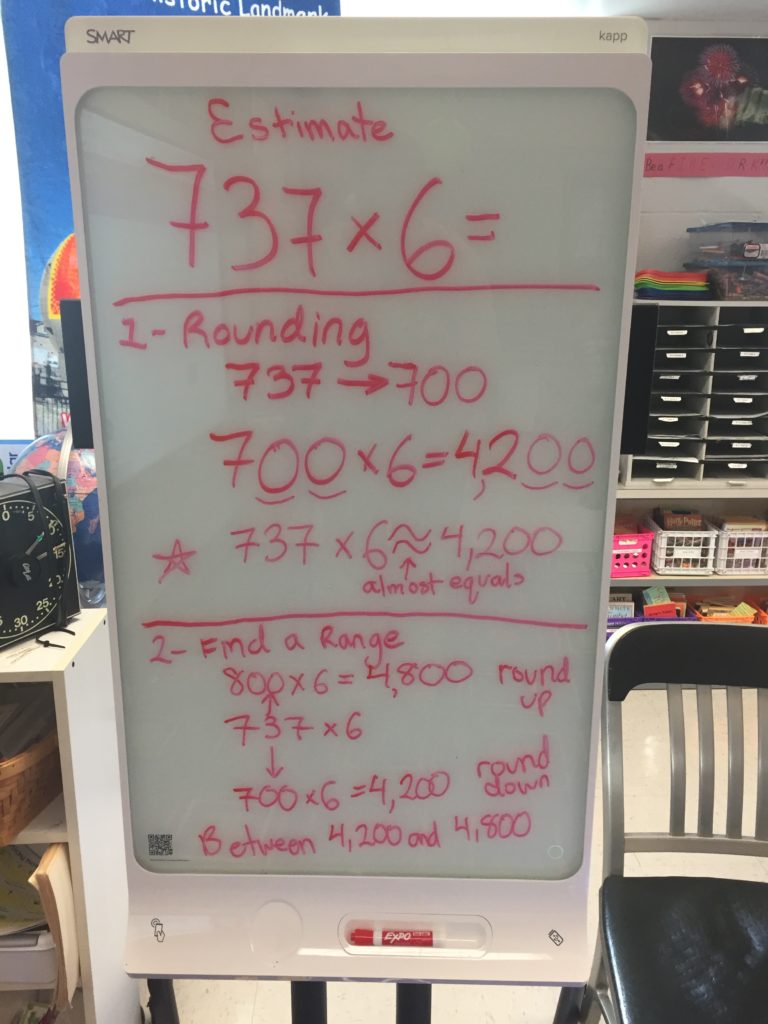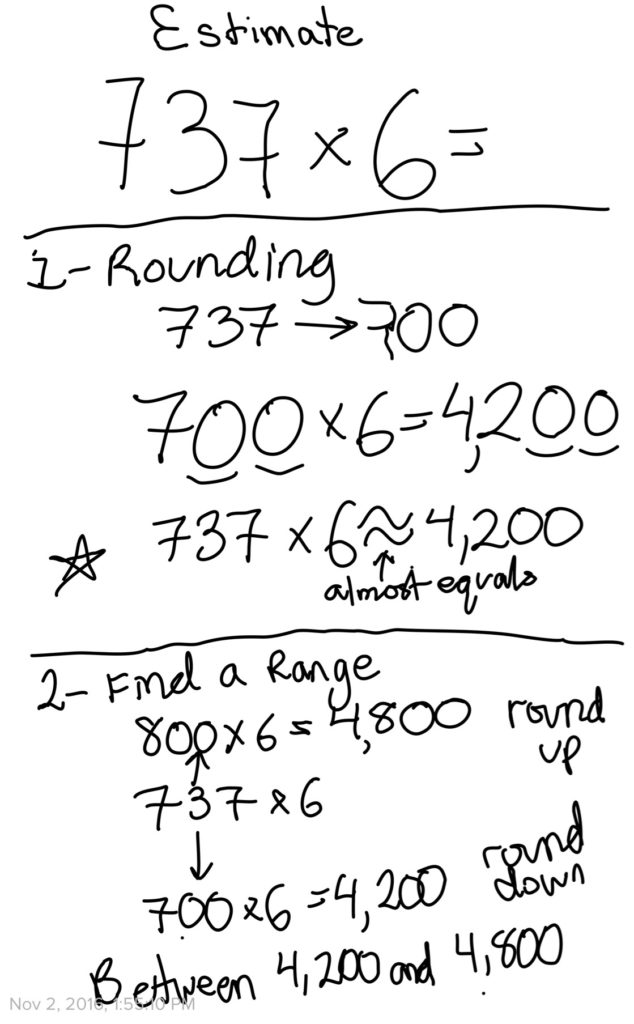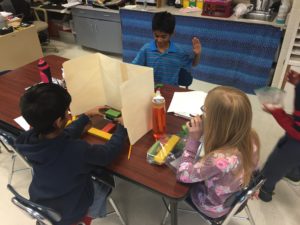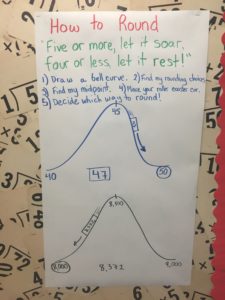Viewing: Class Updates
January 18, 2017
Diversity and Civil Rights – Part 2

Pictured: Martin Luther King (2nd from left) and Abraham Joshua Heschel (right)
Today, we finished reading As Good As Anybody. You may remember that the first half of the book introduced us to Martin Luther King, Jr., starting from when he was a young boy. The second half of the book taught us about Abraham Joshua Heschel, a Jewish man who fought for the rights of Jews who were being persecuted, much as Dr. King did for African Americans. The two men teamed up and worked together to accomplish their shared goal of earning equal civil rights and fair treatment for ALL.
While the kids were, of course, familiar with Dr. King, Abraham Joshua Heschel was a new name to them. The book hints at how Jews were treated unjustly in Europe during World War II, and it lets us add to our previous understanding of discrimination by race or gender by understanding the idea of discrimination by religion. This transitions beautifully to an activity we’re starting on Friday.
Posted in Class Updates|By Jon Moss
January 13, 2017
Thank you so much!
We want to thank you so much for your kindness and generosity during the holiday season!
Dear Students and Families,
My wife and I traveled to New York City at the beginning of the vacation week. We had a wonderful few days, and before catching one of the last performances of Jersey Boys, we had the opportunity to sit in a quiet diner a play a few hands of Rummy. It was fun to play with the Star Trek playing cards you gave me! Thank you so much for the playing cards, the generous Amazon gift card, and the delicious Oreo truffles that you gave me as a class, and for the kind individual gifts that many of you gave me. I love them ALL and appreciate you thinking of me!
-Jon Moss
Dear Wonderful Students,
Thank you so much for the wonderful Panera gift card. I just love it! Both my sons were home for the holiday, so I treated them to a great lunch. We had so much fun catching up and telling stories. I hope you all had the same chance to catch up with your families and share some wonderful times together.
Thanks again for thinking of me. I can not wait to see you all in 2017!! I know we will have a great second half of the year learning many new things and having fun. Enjoy the rest of vacation.😀
Love,
Mrs. Rafferty
Dear Class,
Thank you so much for my holiday gifts! I have been using the candles and I wore my new scarf for Christmas (and I wear it all the time now, too)! The oreo balls were gone VERY quickly once I got home, and they were delicious! I really appreciate everything I received and I am so happy to be a part of this class with all of you. Thank you guys!
-Miss O
Posted in Class Updates|By Jon Moss
January 12, 2017
Diversity and Civil Rights – Part 1
 Martin Luther King Day is such an important day in our country, and in our class, it kicks off our informal unit about Civil Rights. Today, we read the first half of a wonderful book called As Good As Anybody. This book tells the story of Martin Luther King Jr., starting from his life as a young boy. It gave us a wonderful opportunity to talk about the concepts of discrimination, segregation, separate-but-equal (and the inherent flaw in that idea) and more. I’m always glad to see how confused kids are by this – The idea of treating someone unkindly because of their skin color was totally alien to the kids, and they couldn’t fathom how someone would do this to another person. To better illustrate this, we discuss the idea of gender-based discrimination: Are boys better at math than girls? A lot of people think so, so what happens when a male and female are applying for a job at an architectural firm? We discussed how some people might make an unfair decision, and we extended this to form a concept about racial discrimination. Helping kids to build a frame of reference better enables them to understand these ideas. This will launch us into our continuing study of diversity and civil rights. Next week, we’ll read the second half of this book. Stay tuned for the second half of this message, coming in the coming days.
Martin Luther King Day is such an important day in our country, and in our class, it kicks off our informal unit about Civil Rights. Today, we read the first half of a wonderful book called As Good As Anybody. This book tells the story of Martin Luther King Jr., starting from his life as a young boy. It gave us a wonderful opportunity to talk about the concepts of discrimination, segregation, separate-but-equal (and the inherent flaw in that idea) and more. I’m always glad to see how confused kids are by this – The idea of treating someone unkindly because of their skin color was totally alien to the kids, and they couldn’t fathom how someone would do this to another person. To better illustrate this, we discuss the idea of gender-based discrimination: Are boys better at math than girls? A lot of people think so, so what happens when a male and female are applying for a job at an architectural firm? We discussed how some people might make an unfair decision, and we extended this to form a concept about racial discrimination. Helping kids to build a frame of reference better enables them to understand these ideas. This will launch us into our continuing study of diversity and civil rights. Next week, we’ll read the second half of this book. Stay tuned for the second half of this message, coming in the coming days.
Posted in Class Updates|By Jon Moss
November 8, 2016
Independent Reading at Home
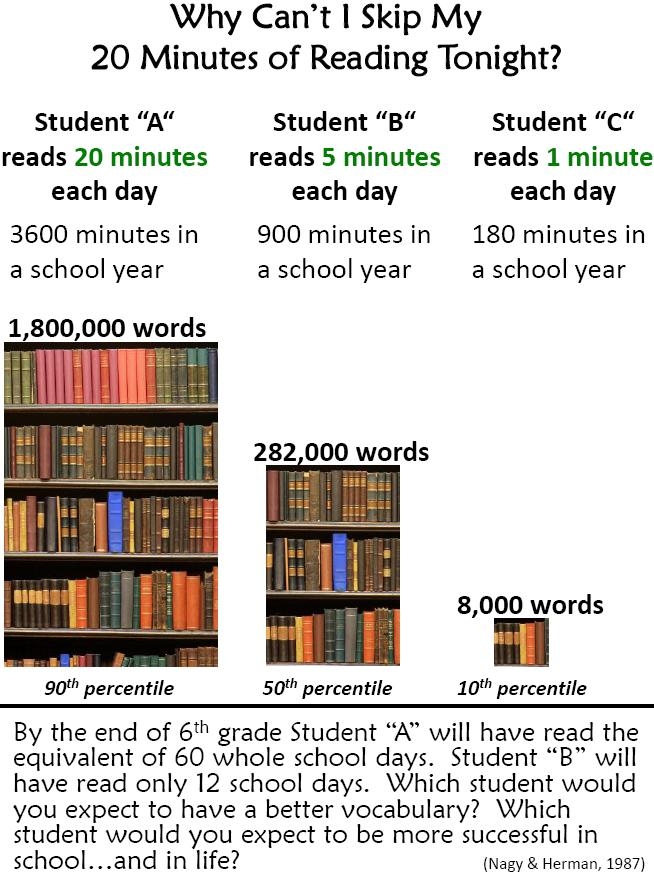 I’m in a workshop about reading instruction, and we’re discussing independent reading. I’ve come across a few ideas that I wanted to share with you! One was this simple graphic (right) that shows the value of independent reading at home. Another point was a simple quote:
I’m in a workshop about reading instruction, and we’re discussing independent reading. I’ve come across a few ideas that I wanted to share with you! One was this simple graphic (right) that shows the value of independent reading at home. Another point was a simple quote:
“When you dismissal the book a child is reading, you are dismissing the child.”
I often hear parents share comments like “I want my child to read real books. All he reads is Captain Underpants!” When we criticize the topic, series, or rigor of a text that a child has chosen, we are communicating a vote of “no confidence” in that child’s judgment. I’ve seen countless times in which an adult’s seemingly off-hand comment deflates a student’s confidence in reading or love of reading. Let’s all be sure to choose our words wisely.
Another important point worth sharing is the idea that we need a balance between giving students autonomy of choosing a book and ensuring that students are choosing a “just right” book at their independent reading level. There is merit to both, certainly, and an ideal balance might involve students choosing a book within a set of books at their reading level. Our school (and, in specific, our classroom) is focusing on improving reading engagement. Reading engagement is the degree to which students enjoy and value reading. There are different ways we support reading engagement, but no matter what, we want students to enjoy what they’re reading, when at all possible.
Posted in Class Updates|By Jon Moss
November 2, 2016
What’s New in November?
As much as I love watching the fall foliage in October, I must admit that I am relieved that it’s over! Two district curriculum meetings, one conference presentation, 26 DRAs (and counting), and plenty of other projects made October a productive but exhausting month! As I dig out from the month that seemingly never ended, I’m looking forward and am excited to share three new things happening in our classroom!
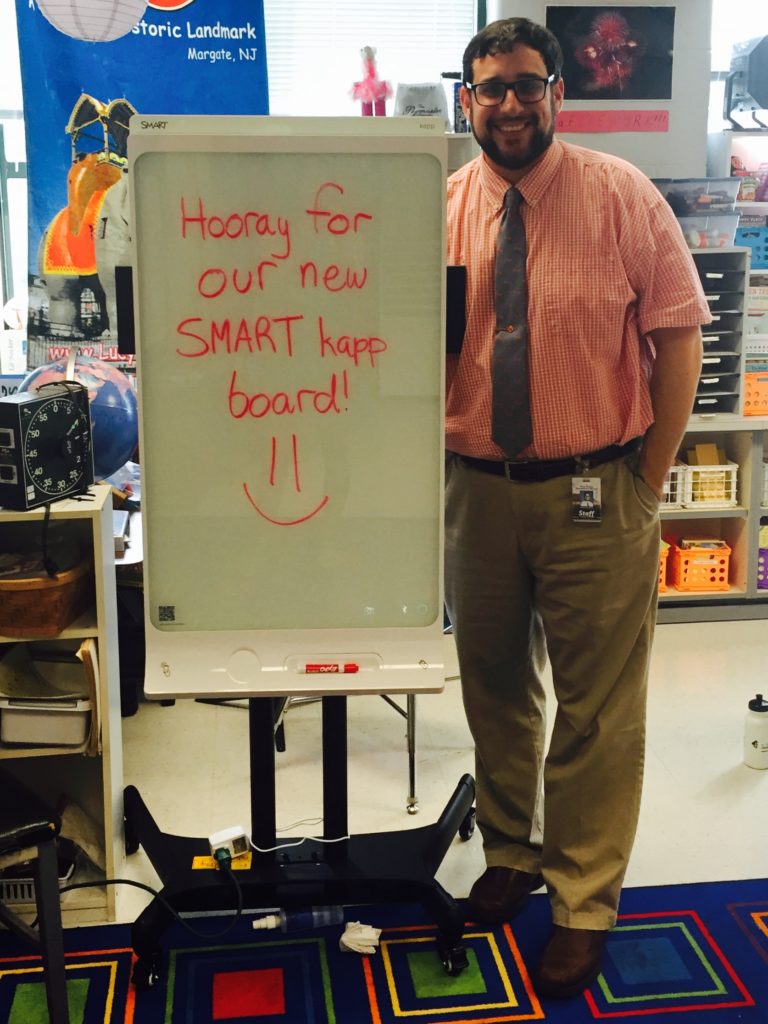 Last Tuesday, I presented at the 2016 CECA/CASL conference about how to integrate collaborative eLearning into classroom instruction. (If you’re interested in learning more about my conference presentation, visit my Teachers and Technology link up top, or click here.) I think it was my lucky day, as I ended up leaving with a new document camera for our classroom and an interactive whiteboard setup (evaluation products from a vendor we’ve used in the past), and a bag of books from a raffle. But my big win was being randomly chosen to receive a “SMART kapp” board for our classroom! SMART kapp is a dry erase board that can capture a snapshot of what’s written on it. By pairing it with my phone, I’m able to take what’s written and upload it to Google Drive (to share in Google Classroom), save it as a PDF or JPG image, and more. I’m excited by its potential to let me share notes from class with students and families in order to support homework. After ordering and assembling a stand, I was excited to try it out today for the first time, and so far, I’m impressed! We used it for a math lesson today, and I uploaded our notes to Google Classroom for the students to use this evening. It’s still new, so we’ll see how it best helps us in class, but I welcome and appreciate your feedback! Here’s a sample of how it looks in real and recorded images:
Last Tuesday, I presented at the 2016 CECA/CASL conference about how to integrate collaborative eLearning into classroom instruction. (If you’re interested in learning more about my conference presentation, visit my Teachers and Technology link up top, or click here.) I think it was my lucky day, as I ended up leaving with a new document camera for our classroom and an interactive whiteboard setup (evaluation products from a vendor we’ve used in the past), and a bag of books from a raffle. But my big win was being randomly chosen to receive a “SMART kapp” board for our classroom! SMART kapp is a dry erase board that can capture a snapshot of what’s written on it. By pairing it with my phone, I’m able to take what’s written and upload it to Google Drive (to share in Google Classroom), save it as a PDF or JPG image, and more. I’m excited by its potential to let me share notes from class with students and families in order to support homework. After ordering and assembling a stand, I was excited to try it out today for the first time, and so far, I’m impressed! We used it for a math lesson today, and I uploaded our notes to Google Classroom for the students to use this evening. It’s still new, so we’ll see how it best helps us in class, but I welcome and appreciate your feedback! Here’s a sample of how it looks in real and recorded images:
Our second “New in November” item is math rotations. This may be familiar to you from third grade. Traditional math lessons take about 60 minutes and may be comprised of 40 minutes of whole class 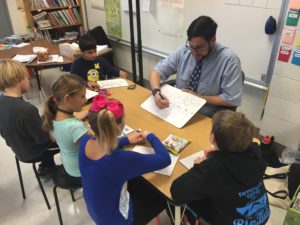 instruction and 20 minutes of independent or small group practice. What’s tough about that is that in that 40 minutes, there are students who are ready to move on after 10 minutes, and students who need more support beyond what was already taught. At PGS, we’re working to be more responsive to student needs, so we use math stations to better differentiate our instruction. The whole class lesson is shorter, only 15 or 20 minutes, and then students split up into assigned groups for math rotations. Students visit four stations in a given day: the teacher station (for small group, customized instruction about the skill I introduced in the minilesson), the practice station (for practice with that same skill), the hands-on station (where there is a game or other fun activity to let students reinforce various math skills), and the fluency station (where students work to maintain their computational fluency – aka adding and subtracting and later, multiplying and dividing).
instruction and 20 minutes of independent or small group practice. What’s tough about that is that in that 40 minutes, there are students who are ready to move on after 10 minutes, and students who need more support beyond what was already taught. At PGS, we’re working to be more responsive to student needs, so we use math stations to better differentiate our instruction. The whole class lesson is shorter, only 15 or 20 minutes, and then students split up into assigned groups for math rotations. Students visit four stations in a given day: the teacher station (for small group, customized instruction about the skill I introduced in the minilesson), the practice station (for practice with that same skill), the hands-on station (where there is a game or other fun activity to let students reinforce various math skills), and the fluency station (where students work to maintain their computational fluency – aka adding and subtracting and later, multiplying and dividing).
There is a set order for these rotations, so for many students, they’re having a 15 or 20 minute minilesson, immediately followed by a 10(ish) minute small group session to work on the same skill. This seems like less time, but the small group setting means that I can provide targeted instruction to students in a more meaningful, efficient way. Other students will see me after visiting one or two or three other stations, but this model ensures that everyone gets the support that he or she needs. Please understand that there are days in which we may not have math rotations, often when we’re introducing a new skill that warrants more time for whole class instruction.
Our final “New in November” is a shift in our class’ conduct system. For the first few weeks of school, groups competed to earn points, and the group with the most points on Friday would earn a few minutes of free time. This works well, and while the friendly competition generally stayed friendly, I wanted to raise the bar for the students. Starting this month, we’re shifting to a cooperative model. Groups are still working to earn points for their team, and we may still have the winning group receive their prize, but the class is working toward a larger goal, too. When ALL the groups have earned 50 points (each), the class will earn a theme day, such as pajama day, 80’s day, etc. That means that in addition to students within a group helping their teammates to make good choices, we also have each group helping one another. The prize won’t come until each group reaches 50, so there’s an incentive for students to support one another in order to achieve their shared goal.
As always, if you have any questions, please feel free to contact me!
Posted in Class Updates|By Jon Moss
October 10, 2016
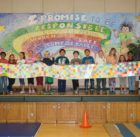
Why Read?
At a recent Town Meeting, our class shared many of our favorite reasons why we LOVE to read! Thanks for sharing your ideas! Take a look at the kids’ AMAZING work, below.
Posted in Class Updates|By Jon Moss
September 28, 2016
Our first writing piece!
We’ve finished our first writing piece of fourth grade! For the past few weeks, we’ve been working on a descriptive writing assignment in which students had to choose a single moment from their summers. This one moment was turned into a snapshot, as if someone paused a video at one split second. (Still photos are “SO” 1996… :-D) Students brainstormed details from this memory and completed a graphic organizer in which they listed details for their SEVEN senses of writing: the traditional sight, sound, touch, taste, and smell, along with both thoughts and feelings. Over the past week, we also worked on enriching their word choice (remember those Wordstorm packets from last week’s homework?) and adding similes to better describe valuable details. Finally, students pulled all these pieces together to draft their descriptions, and they self-revised and self-edited their work before doing both with a partner as well. (Ask you child what the difference is between revising and editing, and ask them which you should always do first!)
Over the past few days, I reviewed each student’s work and provided some feedback to them in their Google Doc. As I shared at open house, you should ALWAYS have access to your children’s Google Classroom account (with their username and password) so you can review their work and my feedback. All I ask is that you DON’T make any changes to their work. I know families come with the best of intentions, but even the most well-intentioned edits and revisions cansidetrack plans I have for lessons or activities. Additionally, it’s important that when I review a student’s work, I know that I’m reading their own work, not something edited or otherwise supported by a grown-up at home. I appreciate you saving that for in-school, unless a specific assignment asks them to work with you at home.
This assignment, which you’ll find under the “Brainstorming Summer Memory” activity, was assessed using our snapshot writing rubric. At the end of your student’s response, you’ll find my comments along with my scores. In each of the seven areas, your child was evaluated on the same four-point scale we use on the report card: An E reflects work that exceeds my expectations for a fourth grader at THIS POINT of the school year. An M reflects that the student’s work meets expectations, while an A indicates that the work is approaching expectations and needs continued growth. A score of B indicates that the work is below expectations and that we’ll continue to work together to improve in this area. We discussed this in class, and your fourth grader can help you to understand each of the areas I assessed.
In class today, we discussed the kind of feedback I gave (often having to do with focusing on a single moment and not a series of events, addressing run-on sentences, adding details to better describe the seven senses, etc.), and most students identified specific ways in which they wanted to improve their writing. This piece was a learning activity in which the students worked with me and with each other throughout the process. Today, students begun writing their family snapshot (as opposed to their summer snapshots). This piece of writing is very similar, but it focuses on a different memory than the summer snapshot. Additionally, this is a wholly independent piece. Students were given the same graphic organizer, editing and revising venn diagram, and Wordstorm lists to help them, but they’re independently moving through the process of developing their response.
We’re just starting this project, so I appreciate you letting your child move through this part themselves. But I encourage you to review your student’s Summer Snapshot project with your child! Keep an eye on their Google Classroom page for more work as the year goes on, and feel free to contact me with any questions!
Interested in learning more about Google Classroom? This video is a bit old, but it’s a terrific introduction to the platform!
Posted in Class Updates|By Jon Moss
September 27, 2016
Independent Reading in Fourth Grade
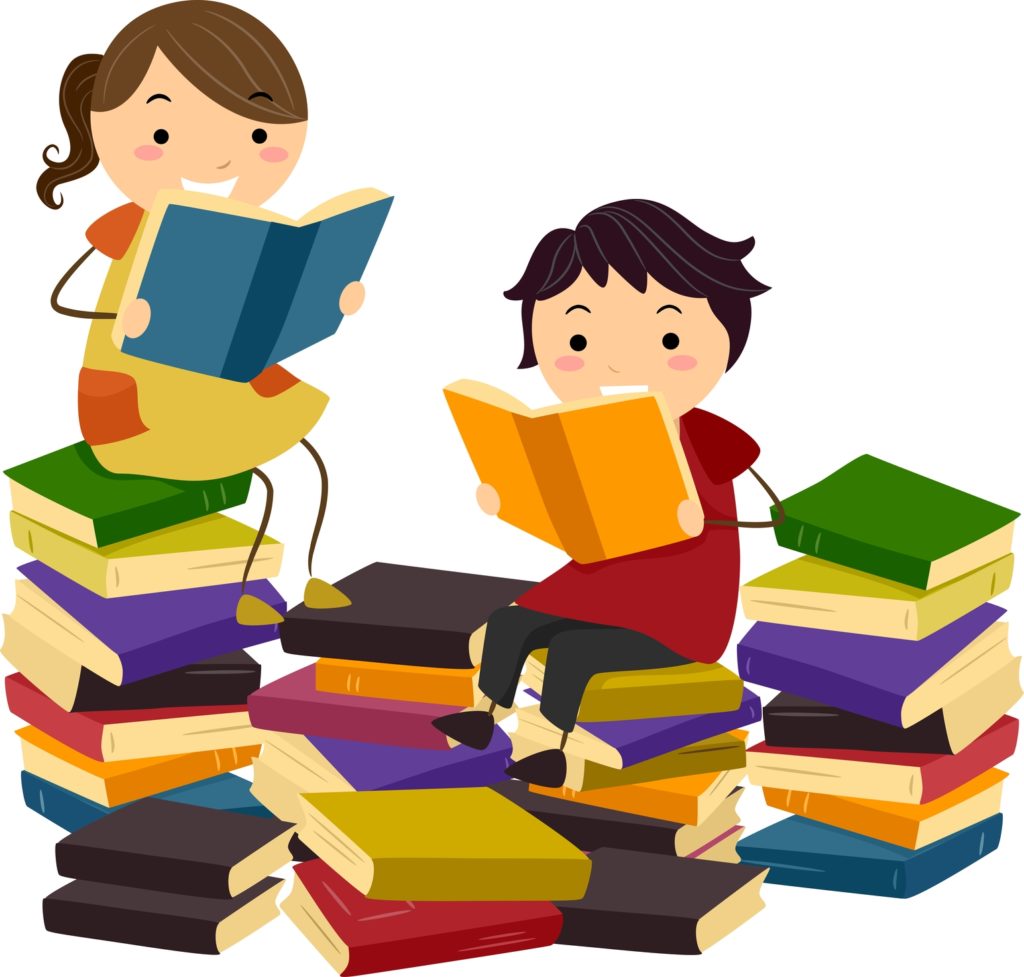 There are so many important things for us to cover this year, but one of the most critical is helping students to build a love of reading! Teachers work to ignite this spark for students (or, more appropriately, to help them to ignite that spark themselves), and we have several ways of helping students along. First, throughout the year, you’ll see different ways in which I’ll work to match students with appropriately-leveled books. This is something that, as time goes on, your student will learn to do for himself or herself to a certain extent. Another focus is on building independent reading skills. When we have independent reading time in class, everyone is reading a book that’s right for them and we have discussed (and will continue to discuss) some of the many strategies that successful readers use.
There are so many important things for us to cover this year, but one of the most critical is helping students to build a love of reading! Teachers work to ignite this spark for students (or, more appropriately, to help them to ignite that spark themselves), and we have several ways of helping students along. First, throughout the year, you’ll see different ways in which I’ll work to match students with appropriately-leveled books. This is something that, as time goes on, your student will learn to do for himself or herself to a certain extent. Another focus is on building independent reading skills. When we have independent reading time in class, everyone is reading a book that’s right for them and we have discussed (and will continue to discuss) some of the many strategies that successful readers use.
Several parents have inquired about a nightly reading log, so I want to take a moment to share my philosophy about reading logs. I don’t use formal reading logs for students for a few reasons: First, it turns the reading into a chore. I’d rather a student enthusiastically read for 20 minutes a day and enjoy it than “force” themselves to read for 30 minutes because they need to reach that exact amount of time for the reading log. If the end goal is for students to LOVE to read, then it should not be tracked as a homework assignment. (That said, it IS a homework assignment. More on that in a moment.) Second, knowing that parents have busy lives, I understand that there may be some nights when kids read a lot, and some nights when there may be less reading. I’d hate to put parents into a position in which they feel that they need to lie on a reading log to avoid their child getting penalized for a tough family schedule that was outside the child’s control. You have enough to juggle, particularly because I’m aware that some of my homework assignments (particularly the computer-based activities) may take more time than conventional worksheets. (I hope you feel that the payoff is worthwhile!)
By now, half of you are probably cheering for a year without reading logs, and half of you are appalled that I’m letting your fourth grader “off the look” when it comes to nightly reading. Let me assure you: I’m not. My expectation is that students read each night, hopefully about 30-40 minutes. That’s in line with all fourth grade classrooms. What’s different is that I’m asking them to be accountable to you, as the people in charge at home who see the whole picture (in terms of what they’re reading, how they’re feeling about the experience, what else is going on, etc.) as opposed to making them accountable to me (where I am disconnected from what’s happening after school). If you’re feeling that your fourth grader is reading each night and is benefiting from the experience, that’s terrific! But if you find that your child’s “willful” reading lasts only five minutes before you need to push more, or if your child has to be poked and prodded to read a book, or if you have any other concerns, I hope you’ll reach out to me so we can talk more. But to summarize: Your child should normally be reading about 30-40 minutes each night, and I ask that you help to ensure this happens on a regular basis). But I’m just an email away if you have questions or concerns.
A few side notes: (1) As I write this, I’m realizing that I haven’t discussed this enough with the students. I’ll fix that tomorrow! (2) As the year progresses, there may be specific reading challenges in which I send home a log, but those will be the exceptions, not the norm. (3) When we meet for our fall parent-teacher conferences, I’ll have completed our first reading assessment with your child, and I’ll be able to give you his or her independent reading level (which can guide you and you and your child choose books at the library or bookstore). If you’re interested in knowing sooner, I’ll have the results by Halloween time, and again, I’m just an email away!
Please feel free to contact me with any questions!
Posted in Class Updates|By Jon Moss
September 14, 2016
Day 9: What’s happening?
It feels as if we’ve been in school for many weeks! The students are doing a great job learning the routines of our class, and this has allowed us to move into our curriculum with efficiency and enthusiasm! Our first focus in reading has been discussing many of the strategies that successful readers use. We’ve discussed how readers choose books for themselves, why some readers abandon books, and how to use our class library. This afternoon, we’re going to again team up with Ms. Kelleher, our library-media specialist, to learn about how to choose a “Just Right” book for ourselves. This will be helpful as we find students’ independent reading levels in the coming weeks. Yesterday, we learned about how to “buzz”, that is, how to have a group conversation about a single topic. You might be surprised to hear that we’re focusing on something so fundamental, but we’ve found in fourth grade that dedicating time NOW to discussing the basic ideas of taking turns, making eye contact, etc. allows student discourse down the road to be significantly more productive and engaging.
In math, we’ve been working on place value! Our first few lessons introduced place value concepts and built upon the students’ prior skills. Today, we worked on rounding numbers; a concept that we’ll spread out over a few days. Estimation can be a challenging skill for students, so I teach them the roller coaster strategy. (See picture.) This method lets students break up the rounding process into five steps, and by adding a visual piece, it makes it less overwhelming for many learners. Feel free to show this image to your fourth grader to help them with their homework. Tomorrow, we’ll translate this strategy to a more traditional process in which they round numbers without the elaborate visual process. We’ll return to the roller coaster method when we work on rounding to different places, such as taking a number like 8,372 and rounding to the nearest thousand (8,000) or nearest hundred (8,400) or nearest ten (8,370). I don’t expect mastery on day one, and I admire the hard work students are showing!
We’ve started our Targeted Instruction rotations! As I explained at curriculum night, TI will allow us to meet each student’s individual needs by breaking up classes. For example, during the TI block one week, I might focus on rounding numbers, Mrs. Castle might focus on descriptive writing, and Miss Lacasse might focus on map skills. Rather than whole classes traveling together, we’ll each send our students to the teacher who is offering the activity that best fits student needs. We’re excited to have many different teachers collaborating with us, so stay tuned! This week, students ARE rotating among each teacher as whole classes in order to establish routines. Next week, we’re going to start to shuffle students.
Questions? Send me an email! Have a great day!
Posted in Class Updates|By Jon Moss
September 12, 2016
Video and Slides from Curriculum Night
Click here to download the PDF of my 2016-2017 Curriculum Night presentation!
Posted in Class Updates|By Jon Moss


